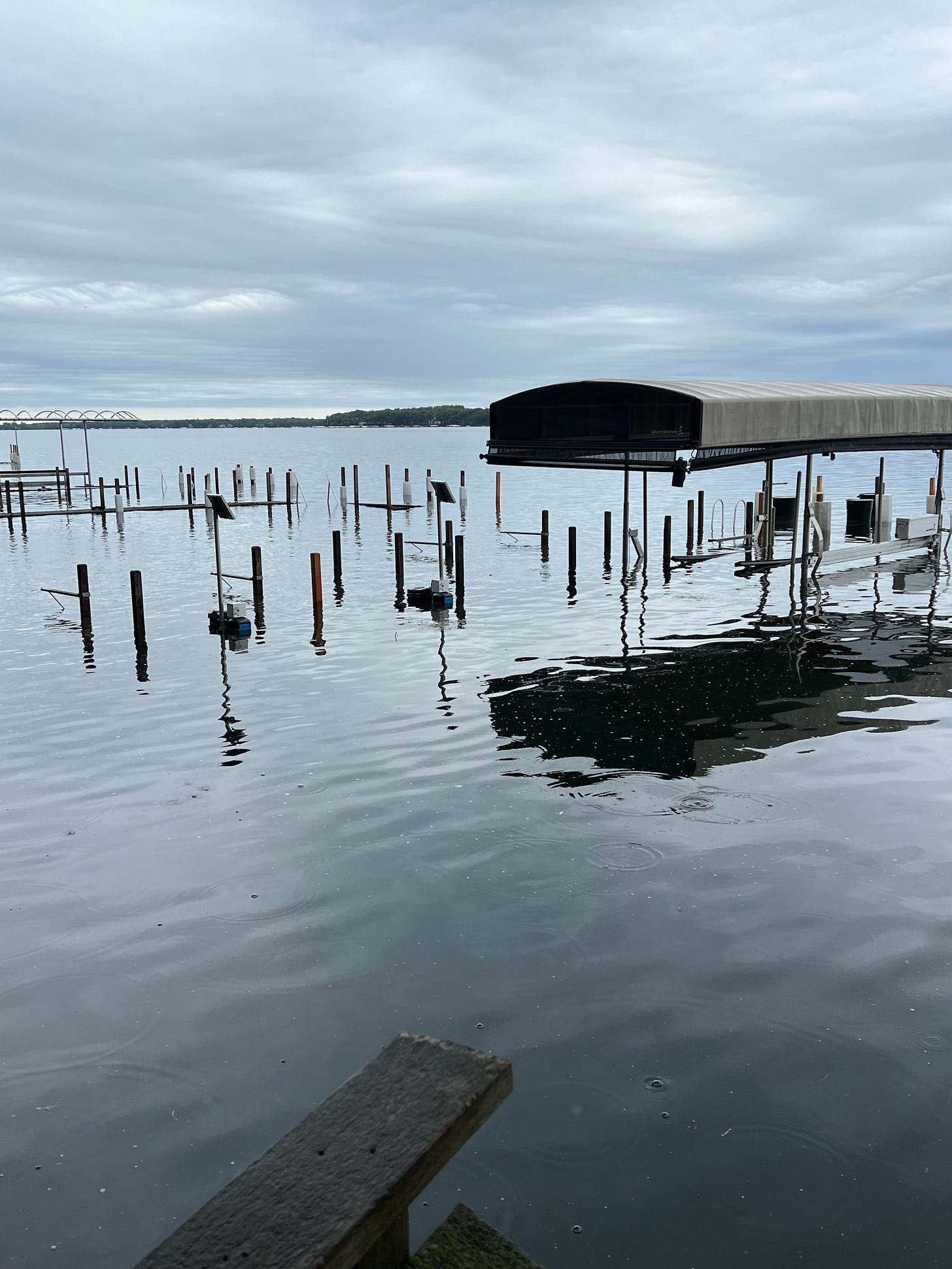The docks are under water and the boats are gone, back into storage.
Boat hoists stand isolated and empty 30 feet or more from the shoreline.
Okoboji is flooded.
As of 1:45 p.m. Saturday, West Lake had risen almost 15 inches in 24 hours with most of the rain falling overnight.
It was at 7.82 feet at the Lakeside Laboratory measuring point. That compares with a peak depth of 6.42 feet at the same point in the memorable flood of 1993, according to the U.S. Geological Service (USGS).
At 7.82 feet, the water is almost 3.5 feet higher than normal, according to the USGS.
The so-called no-wake rule, which translates to a maximum speed of no more than 5 m.p.h., is in effect for the entire Lakes area. At this speed, it takes an hour to travel from the north end of West Lake to the south end.
My dock provider said that if your dock is underwater or nearly underwater, about the only thing that can be done is to get as much weight as possible onto the dock. One way to do that is with plastic garbage containers filled with water. A major wind, however, may still be able to rip the dock apart. The violent storm last Sunday night, which destroyed a number of docks, included a 60 m.p.h. wind.
Another worry in all of this is the sanitary sewer system for the Lakes area.
The Iowa Great Lakes Sanitary District’s sewer and processing system is completely overwhelmed with untreated wastewater being bypassed into all of the lakes, radio station KUOO reported Saturday.
Highways through the Lakes area and leading to/from it seem problematic. Friday night, the water engulfed Highway 71 between Arnolds Park and Okoboji, closing the road. It was open again on Saturday, however. Interstate 90 was closed at Luverne, Minnesota, on Friday, forcing a detour south on Highway 75 to Highway 9 leading into Spirit Lake. Highway 9 was open as of Saturday. Best to check road accessibility before getting on the road.
The 1993 flood
The rains that produced the 1993 flood began on June 30 and continued through mid-July.
By the beginning of August, 438 homes on the three major lakes had been damaged by flooding. Eleven mobile homes were destroyed. Numerous businesses at the south end of West Lake were damaged. Numerous homes in the canals near Miller’s Bay on West Lake were flooded. The destruction would have been worse without the 760,000 sandbags used to divert some of the water.
Altogether, during May, June, and July of 1993, a record 28 inches of rain fell in the Lakes area with the wind exceeding 70 m.p.h. at its maximum.
At its peak, the water flowed through the streets of the amusement park at Arnolds Park.
The clearance for passing under the highway and railroad bridges spanning the gap between East and West Lakes was insufficient to accommodate most boats.
The sand beach at Pikes Point State Park was mostly flooded over.
One of the major issues that year was bank erosion as the water cut into the lakeshore by six, eight, 10 feet at some points, permanently changing the shoreline in various places.
This summary of the 1993 flood was taken from a paperback book, On the Okobojis and Spirit Lake, Summer, 1993, by R. Smith Schuneman of Fair Oak Beach, West Okoboji




